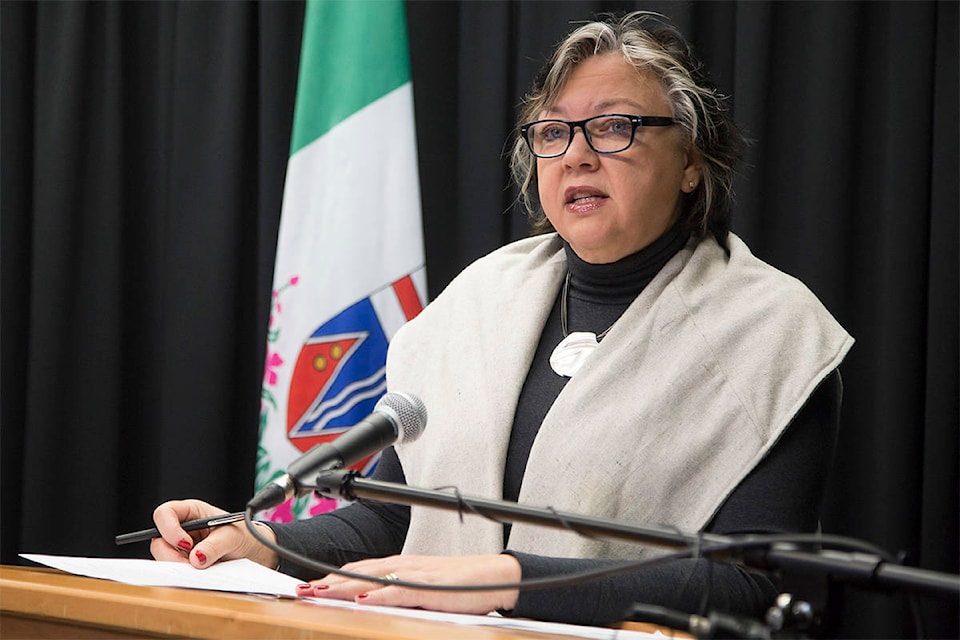Yukon students will return to classrooms this fall, though for those in their final years of secondary school in Whitehorse it may be for half days only.
The preliminary operational plans for the 2020/2021 school year were announced July 9 via teleconference with Education Minister Tracy-Anne McPhee and Chief Medical Officer of Health Dr. Brendan Hanley. Under the plans, all students in kindergarten to Grade 9 will return to classrooms full time. In rural communities, students in Grades 10 to 12 will also return to classes full time, while in Whitehorse Grades 10 to 12 students will follow a blended learning model, attending their four classes at school half days, five days a week, while accessing other learning options away from school.
As in many regions, Yukon classes ended in March due to COVID-19, moving students to at-home learning methods. In June, offiicials said plans were in the works for the next school year with a goal of returning students to the classroom for the 2020/2021 school year while also ensuring health and safety measures are met.
“The well-being of students and staff is our priority,” McPhee said. “We are working to ensure Yukon schools are safe and healthy environments for returning to class and that all students have face-to-face opportunities to learn with their teachers and classmates while following the health and safety guidance from the Chief Medical Officer of Health. Plans for the 2020–21 school year include flexibility to adjust operations or reduce the number of students in schools if necessary. We continue to work with school communities, school councils, Yukon First Nations and the Yukon Teachers’ Association on operational planning to meet the unique needs and context of each school community.”
The plans will also see a move for some students as officials work to ensure safe spacing at schools with the 135 Grade 8 F.H. Collins Secondary School students set to attend the Wood Street Centre downtown. Meanwhile, the experiential programs that are typically run out of the Wood Street Centre will be moved to either F.H. Collins Secondary School or Porter Creek Secondary School depending on the program. McPhee noted the two programs offered in French at the Wood Street Centre will happen at F.H. Collins, which already houses the French immersion high school program. All other Wood Street programs will move to a space at PCSS.
McPhee also indicated that while most Grade 10 to 12 students will attend for half days only, there may be exceptions for those who require more supports. There are also plans to make mobile technology available to those who need it and plans for spaces where students can access online tools if they are unable to do so at home.
The department, she said, recognizes the need for students to have consistent, daily contact with their teachers and support staff and this will allow for that while also providing safe spacing in the schools. Officials will also be closely monitoring how the blended learning model goes for students, she stressed.
In answering questions from reporters, McPhee described the final three years of high school as a “critical part” of a students’ education, noting it is also a time when they are becoming more independent and learning to do a lot on their own with guidance by teachers. It’s hoped that the blended learning model will allow students that independence.
While the changes will allow for better spacing of students, Hanley said at all schools it will be more a matter of “practical” spacing rather than a hard rule requiring full distancing.
The plan, he said, emphasizes the health and safety of students and staff while ensuring students can get back to class, something that’s especially important for students who rely on supports from school.
“Getting children back into schools is critical for their health and learning success,” he said. “Keeping children out of school for too long can result in long lasting emotional, and mental health effects. Students rely on teachers, counsellors, support staff and fellow students for formal and informal mental well-being and support, while continued closures can expose children to social isolation and boredom. Much work has gone into our efforts between the Department of Education and my team to ensure we have the proper protective measures in place to get children and youth back into a familiar environment and to thrive in a renewed educational environment that also supports and protects teachers and staff.”
Individual schools are scheduled to have their operational plans finalized by Aug. 12, with many schools scheduled to reopen for the new school year on Aug. 19.
The school bus system will also be operating for the 2020/2021 school year, though officials are encouraging those who can bike, walk or carpool to school to do so as students will be “prioritized for busing in the 2020/2021 school year if they are eligible for school busing as described in the Education Act and Student Transportation Regulations for students residing outside of a 3.2-kilometre radius of their school and are enrolled in their attendance area school.”
Detailed operational guidelines, including the number of students per seat, loading and unloading procedures, and cleaning protocols will be released later in July. McPhee encouraged anyone who hasn’t registered for the bus and needs the service to do so via the government’s website.
Contact Stephanie Waddell at stephanie.waddell@yukon-news.com
